New Appointments to Scarsdale Village Boards and Councils
- Details
- Written by: Joanne Wallenstein
- Hits: 10879
 The Village Board announced the following appointments to Village Boards and Councils at their first meeting with the newly elected trustees on April 8th. Here are the new appointments to Scarsdale Boards and Councils:
The Village Board announced the following appointments to Village Boards and Councils at their first meeting with the newly elected trustees on April 8th. Here are the new appointments to Scarsdale Boards and Councils:
Board of Ethics: Evelyn Stock will serve as the chair and Jane Veron has been appointed as a member of the Board.
Library Board: John Harris has been appointed as a member of the Board.
Advisory Council on Youth: Polly Klein and Debra Burnham Hyman to serve as members. Lou Mancini is re-appointed as a member.
Advisory Council on Scarsdale Senior Citizens: Barbara Baum, Joan Gips, Terry Kessler Schwarz, Marjorie Spiro and Bob Wax have been re-appointed as members of the Council, and Carol Silverman has been re-appointed as chair.
Board of Appeals: Jeff Watiker will serve as a member, Justin Arest will serve as an alternate and George Lindsay will serve as chair.
Council on People with Disabilities: Beatrice Cremieux, Robin Goldman, Marian Green and Carol Kadanoff have been re-appointed as council members and Marian Green will serve as chair.
Conservation Advisory Council: Ron Schulhof and Cynthia Roberts have been re-appointed as members and Lee Fischman will serve as chair.
Board of Architectural Review: Carl Finger will serve as a member and Jessica Kourakos and Jamie Kayam as alternates. The BAR will be chaired by Jack Scott Miller.
Planning Board: Dan Steinberg will serve as a member, William Ortner as an alternate and Seth Ross was re-appointed to chair the Board.
Committee for Historic Preservation: Bana Choura has been appointed a member and Paul Diamond will continue as committee chair.
Advisory Council on Parks and Recreation: Sean Kelly, Louis Vetrone and Matthew Zik have been re-appointed as members and Gerard Varlotta has been re-appointed as chair.
Advisory Council on Technology: Daniel Finger, Kamal Mehta, Michael Raposa and Iliya Rybchin have been re-appointed as members and Bruce Well as chair.
Cable Television Commission: Raphael Abada and Christopher Marvin appointed members and Lorayne Fiorillo as chair.
Advisory Council on Human Relations: Timothy Foley, Michael Duncanson and Doris Pechman as member, Michael Duncanson to chair.
David Raizen Draws Record Crowd to 2014 Scarsdale Bowl Dinner
- Details
- Written by: Joanne Wallenstein
- Hits: 8453
 It was a night of firsts for the Scarsdale Bowl Dinner – with the youngest honoree in the history of the Bowl, drawing the largest crowd ever to a new venue for the event. Bowl Chair David Brodsky greeted the 440 guests to the Fountainhead in New Rochelle, and thanked friends, former Bowl members, SCARVAC volunteers, the Mayor, the Bowl Committee, local officials and the community for turning out to honor David Raizen for outstanding community service. A special shout out went to Deb Pekarek, a newly-minted Village trustee who served as secretary/treasurer of the Bowl Committee and Evelyn Stock who is both a trustee as the Scarsdale Foundation and a member of the Bowl Committee for extraordinary efforts in arranging the festivities. Brodsky noted former Bowl Honoree Eda Newhouse who passed away recently and also thanked Scarsdale School Superintendent Michael McGill who will be retiring at the close of the school year.
It was a night of firsts for the Scarsdale Bowl Dinner – with the youngest honoree in the history of the Bowl, drawing the largest crowd ever to a new venue for the event. Bowl Chair David Brodsky greeted the 440 guests to the Fountainhead in New Rochelle, and thanked friends, former Bowl members, SCARVAC volunteers, the Mayor, the Bowl Committee, local officials and the community for turning out to honor David Raizen for outstanding community service. A special shout out went to Deb Pekarek, a newly-minted Village trustee who served as secretary/treasurer of the Bowl Committee and Evelyn Stock who is both a trustee as the Scarsdale Foundation and a member of the Bowl Committee for extraordinary efforts in arranging the festivities. Brodsky noted former Bowl Honoree Eda Newhouse who passed away recently and also thanked Scarsdale School Superintendent Michael McGill who will be retiring at the close of the school year.
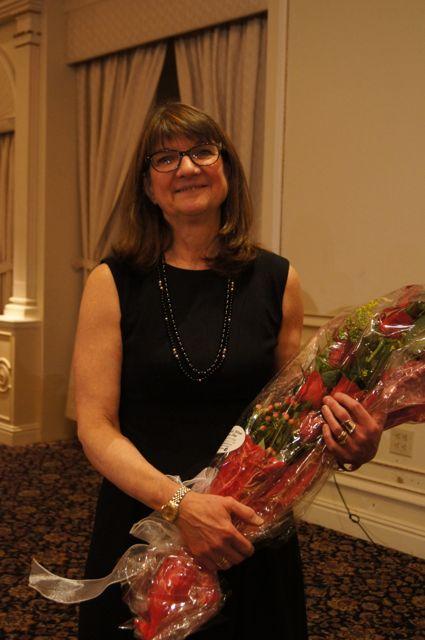 After a blessing from Rabbi Bruce M. Freyer, the speeches got underway. As a lifelong resident of Scarsdale, the founder of Scarsdale Security and President of the Scarsdale Village Ambulance Corps., Raizen has a wealth of friends who purchased seats to the event and came to laud his efforts on behalf of the Village.
After a blessing from Rabbi Bruce M. Freyer, the speeches got underway. As a lifelong resident of Scarsdale, the founder of Scarsdale Security and President of the Scarsdale Village Ambulance Corps., Raizen has a wealth of friends who purchased seats to the event and came to laud his efforts on behalf of the Village.
Scarsdale Foundation President and former Village Trustee Richard Toder was eloquent as always and quoted Benjamin Franklin who said, " He that drinks his cider alone, let him catch his horse alone." Calling Franklin the father of volunteerism he quoted him again saying, "The good men may do separately is small, compared with what they may do collectively,' and added "I have no doubt that if Franklin had the good fortune to live in Scarsdale, he would have been awarded the Scarsdale Bowl." He thanked Bowl Chair David Brodsky for his "herculean efforts" to move the Bowl to a new venue and presensted Deb Pekarek with a beautiful bouquet of red roses.
First up was Fire Chief Thomas M. Cain, in full uniform. He revealed that he began his 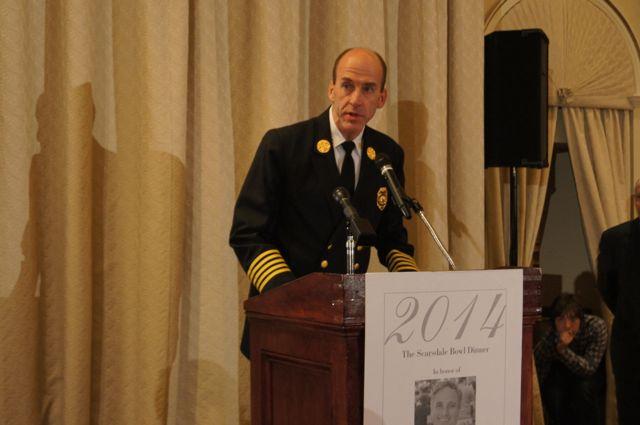 29-year friendship with David over a cup of coffee and a diet coke at the Heathcote Deli in January 1985. Cain worked part-time at Scarsdale Security and noted that Raizen always put the needs of the ambulance corps before the business, staying up all night on calls. He credited David with building the "most highly regarded volunteer ambulance
29-year friendship with David over a cup of coffee and a diet coke at the Heathcote Deli in January 1985. Cain worked part-time at Scarsdale Security and noted that Raizen always put the needs of the ambulance corps before the business, staying up all night on calls. He credited David with building the "most highly regarded volunteer ambulance 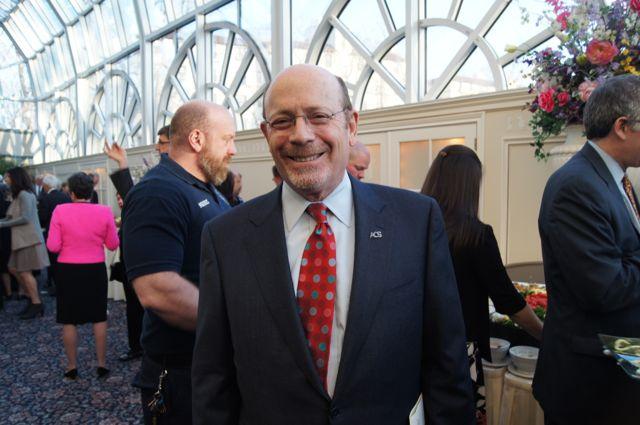 services in Westchester County," and said Raizen was "an extraordinarily intelligent and compassionate community- minded individual who selflessly gives of himself to his friends, his employees, his neighbors, his relatives, as well as thousands of complete strangers on a continuous basis."
services in Westchester County," and said Raizen was "an extraordinarily intelligent and compassionate community- minded individual who selflessly gives of himself to his friends, his employees, his neighbors, his relatives, as well as thousands of complete strangers on a continuous basis."
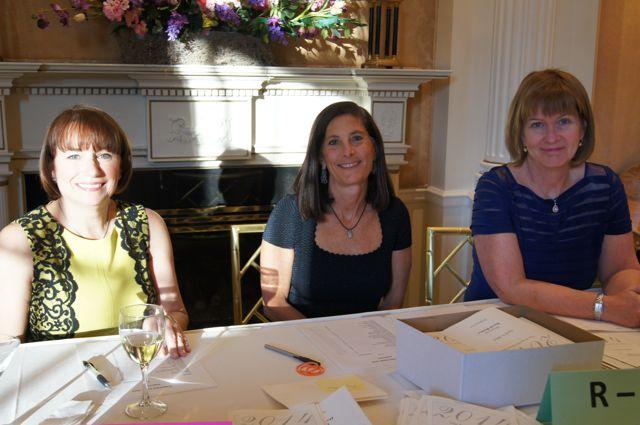 Steve Rambone, who has known David since high school gave a comic recap of their lives together. He joked, "What a crowd! Did you offer everyone a free alarm system? He called David "Mr. Scarsdale" and remembered that they started their first business together, "Raizen and Rambone Home Repairs." They both drove Chevy Impalas to high school and shared a passion for electronics and carpentry. In fact, the two launched the alarm company in Raizen's garage and while Raizen built the business, Rambone went on to teaching. He said that Raizen "designed, built and staffed one of the finest ambulance buildings" and called him a dedicated father and a great employer.
Steve Rambone, who has known David since high school gave a comic recap of their lives together. He joked, "What a crowd! Did you offer everyone a free alarm system? He called David "Mr. Scarsdale" and remembered that they started their first business together, "Raizen and Rambone Home Repairs." They both drove Chevy Impalas to high school and shared a passion for electronics and carpentry. In fact, the two launched the alarm company in Raizen's garage and while Raizen built the business, Rambone went on to teaching. He said that Raizen "designed, built and staffed one of the finest ambulance buildings" and called him a dedicated father and a great employer.
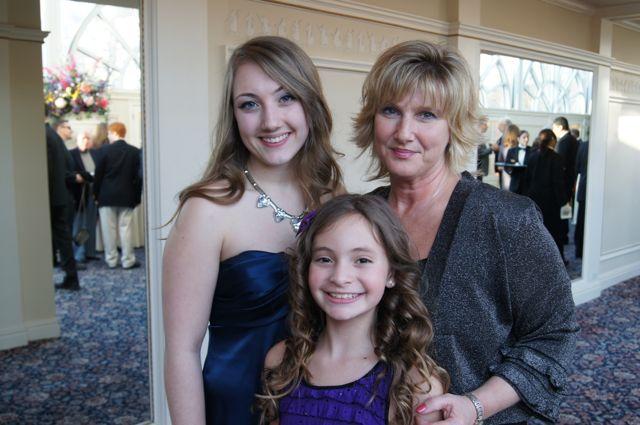 Former Mayor Peter Strauss joked that in elementary school, Raizen "was a little boy running around the classroom sticking pins into sockets, eager to see what would happen – all the while making his teachers crazy. That little boy was wired – and as we know today - a large part of the world has been wired by that little boy!"
Former Mayor Peter Strauss joked that in elementary school, Raizen "was a little boy running around the classroom sticking pins into sockets, eager to see what would happen – all the while making his teachers crazy. That little boy was wired – and as we know today - a large part of the world has been wired by that little boy!"
Strauss continued, "That restlessness, that patience, and that persistence have neve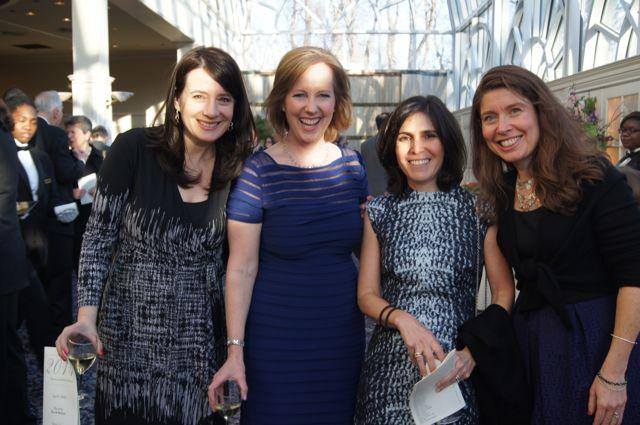 r left David; they are at the heart of everything he has done since – in his family, in his security business, Scarsdale Security Systems, and in his extraordinary leadership of the Scarsdale Volunteer Ambulance Corps."
r left David; they are at the heart of everything he has done since – in his family, in his security business, Scarsdale Security Systems, and in his extraordinary leadership of the Scarsdale Volunteer Ambulance Corps."
He said that Raizen "is continuously solving the problems facing his multi-faceted world – in his family, in his business, and in the unrelenting pressure of the daily needs of the Scarsdale Volunteer Ambulance Corps," and credited him with strengthening the total emergency services in the Village.
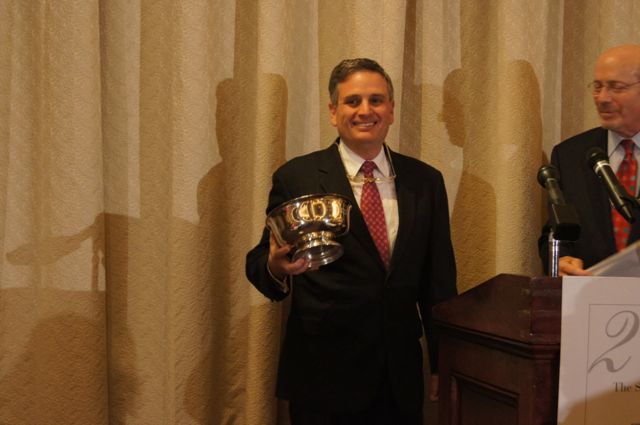 The big moment arrived and Raizen was awarded the Bowl. He lost his characteristic worried expression and beamed as he held the bowl aloft.
The big moment arrived and Raizen was awarded the Bowl. He lost his characteristic worried expression and beamed as he held the bowl aloft.
He opened by saying "Scarsdale is my home. ...It's the site of all of those elements and memories, large and small that comprise a life—my failures, my successes, and my many milestones: learning to walk, learning to talk, learning to drive. My first date, my first kiss. So I think you will know what I'm talking about when I say it feels a little odd being awarded for service to my community because serving my home is the most natural thing in the world."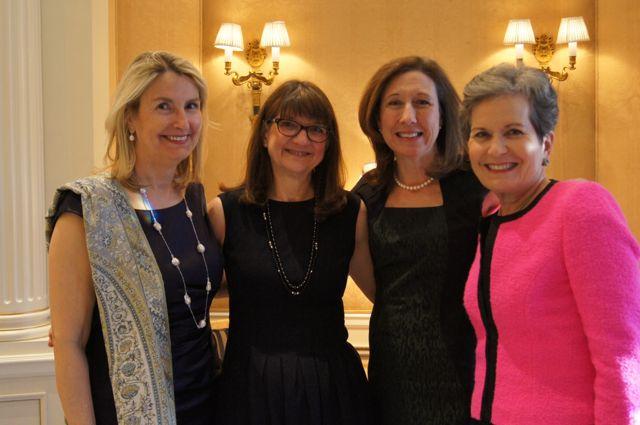
Discussing the calls he said, "At the ambulance corps, it's a lot of missed meals. A lot of interrupted holidays. It's time away from spouse and children, not only for all of the emergency calls, but also for the hundreds of hours of training."
"So why do we do it? Of all the ways we could serve our incredible town, why the ambulance? To the dismay of Chief Brogan, my response to that question is often, "Where else in the world do I get to go 90 miles per hour, down the wrong side of the street, chasing the cops!!"
 Remembering his early experiences with EMS he said, "I didn't get to go on my actual first call until I was 18. That first call was a DOA. Maybe that should have discouraged me, but I was nervous, and it was comforting to see right away that I couldn't really screw this one up. "...This is a calling. I didn't choose the EMS. It chose me."
Remembering his early experiences with EMS he said, "I didn't get to go on my actual first call until I was 18. That first call was a DOA. Maybe that should have discouraged me, but I was nervous, and it was comforting to see right away that I couldn't really screw this one up. "...This is a calling. I didn't choose the EMS. It chose me."
He thanked the entire corps, many who were in the audience saying, "And I'm not the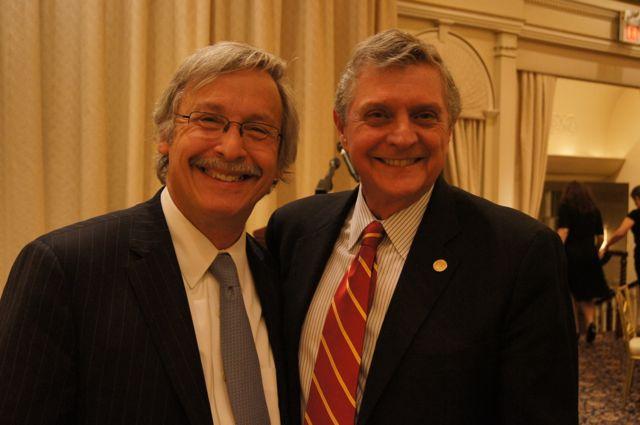 only one. I may be the face of the Scarsdale Volunteer Ambulance Corps, but there are seventy-five other volunteers and career staff alongside me, and any credit I receive equally goes to them."
only one. I may be the face of the Scarsdale Volunteer Ambulance Corps, but there are seventy-five other volunteers and career staff alongside me, and any credit I receive equally goes to them."
He told the group, "I love what I do as President of SCARVAC, and I hope to do it for years to come, as long as the membership allows me to and will put up with me."
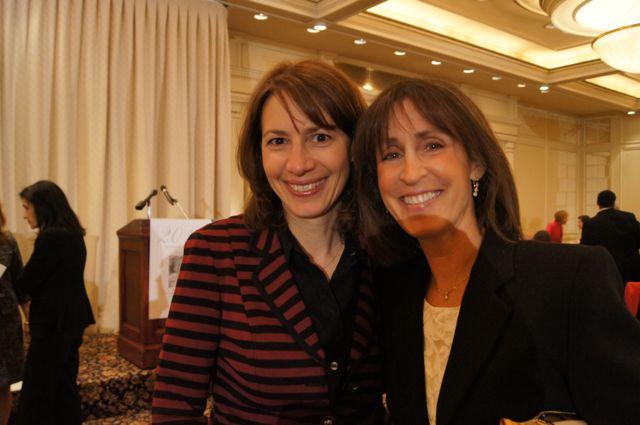 Encouraging others to volunteer, he said, "The best way we can show we're grateful for our town is to serve it. So, to all of you currently not serving Scarsdale, I ask you—find your calling, and do your duty. Serve your home."
Encouraging others to volunteer, he said, "The best way we can show we're grateful for our town is to serve it. So, to all of you currently not serving Scarsdale, I ask you—find your calling, and do your duty. Serve your home."
He closed by saying "When I say good-bye to people, I often joke by saying, "See you later. Well, actually, I hope I don't, but you know what I mean." To all of you, I want to say, "See you later," and this time, I hope I do. And you know what I mean. Thanks."
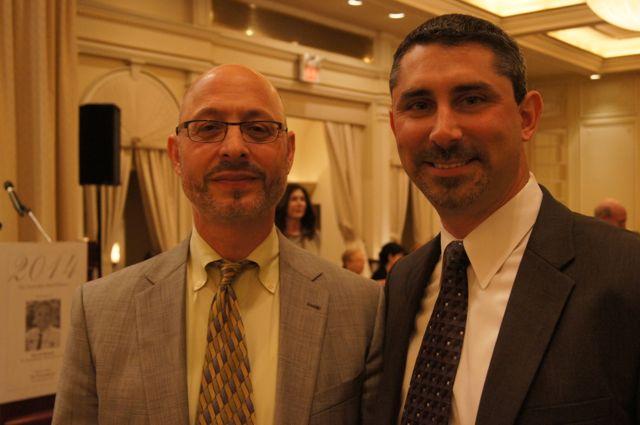
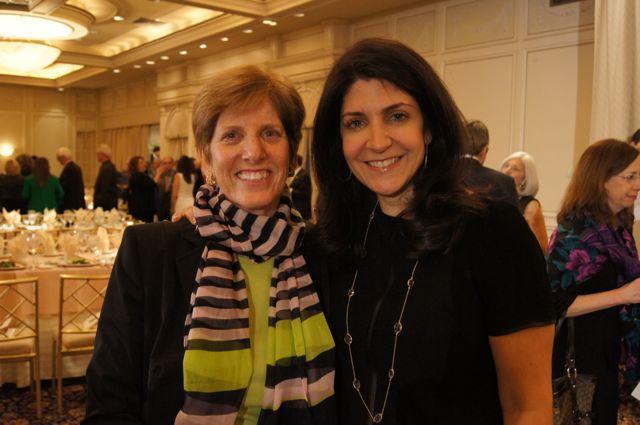
Water Main Flushing and Drug Disposal Program
- Details
- Written by: Joanne Wallenstein
- Hits: 6252
 Scarsdale Village has announced that water mains will be flushed beginning April 7. Scarsdale Police advise that you can dispose of prescription drugs and over the counter medications at Public Safety headquarters. See the notices below:
Scarsdale Village has announced that water mains will be flushed beginning April 7. Scarsdale Police advise that you can dispose of prescription drugs and over the counter medications at Public Safety headquarters. See the notices below:
Water Main Flushing:
The periodic water main flushing program of the Village Water Department will begin Monday, April 7th, and will continue until all pipes in the system have been systematically flushed.
The program is scheduled to prevent discoloration of water during the heavy demand periods of the summer. Slight discoloration may occur during the flushing period but will settle out in a short time. Though the water is safe for consumption it may stain clothes if washed in it.
During the week of April 7th the cleaning operation will be in the Greenacres Area, Fox Meadow Area, Village Business District Area, Village Hall Area and then proceed into the Hyatt Field Area. During flushing, water in the general area may become discolored. Anticipate discolored water during the day and early evening. Surrounding areas may also experience some discoloration.
The weekly activities of the program will be broadcast on Cablevision 75, Verizon 43 and in the Water Department section of the Village Web site, (scarsdale.com).
Drug Disposal Program from the Scarsdale Police:
The Scarsdale Police Department provides a Drug Disposal unit that allows the public to safely dispose of prescription and over the counter medications. The Drug Disposal Unit is located on the 2nd floor of the Police Headquarters lobby, and can be accessed by elevator.
By participating in this program, residents will be making sure their unwanted pills and medication don't end up in a landfill or water supply. They will also be removing medication that could be abused, such as painkillers, from their homes.
Accepted Items:
Prescription and Over-The-Counter Medication. Medication samples, Vitamins, Veterinary Medications, Narcotics and Liquid Medications.
Items not accepted:
Syringes, Thermometers, IV bags, Bloody or Infectious Waste, Personal Care Products, Hydrogen Peroxide, Empty Containers and Inhalers, Hazardous Medical Waste, Sharps.
Scarsdale Board Pays Tribute to Departing Trustees Kay Eisenman and Jon Mark
- Details
- Written by: Joanne Wallenstein
- Hits: 13721
 On Tuesday March 25 the Scarsdale Village Board and community said thank you and goodbye to two exemplary Village Trustees who have just completed four years of service on the Village Board. Trustees Kay Eisenman and Jon Mark finish their service to the Village this month and the Board devoted their last meeting to reflecting on their service and applauding their efforts on behalf of the Board, the Village and the community
On Tuesday March 25 the Scarsdale Village Board and community said thank you and goodbye to two exemplary Village Trustees who have just completed four years of service on the Village Board. Trustees Kay Eisenman and Jon Mark finish their service to the Village this month and the Board devoted their last meeting to reflecting on their service and applauding their efforts on behalf of the Board, the Village and the community
Each remaining Board member took a turn lauding Eisenman and Mark and then the two departing members gave their comments as well. Speakers were emotional at times, reflecting the personal bonds they have formed in the many hours the board has worked together.
After thanking his fellow trustees, Mark delivered an insightful statement on the state of the village, discussing key issues that will be faced by future boards and giving a call for residents to get involved and provide broad-based community input.
Mark summed up his thoughts on the non-partisan system and how it serves the Village. Discussing the merits of the current system over a partisan one he said that the non-partisan system allows the Board the opportunity to approach issues free of the pressures that come with a political system. The non-partisan system has no barriers to entry and residents who wish to participate can do so and make an impact on the Village. However he cautioned that only a small number of residents do get involved or provide input to the Board on key issues, leaving the floor to a few outspoken neighbors who may not represent the general consensus. He discussed development and preservation and the challenges imposed on the independence of Village government by Albany where state mandates are threatening the Village's ability to function. (His full statement appears below.)
Here are excerpts from the tributes of Board Members to Eisenman and Mark:
Trustee Bill Stern thanked both Jon and Kay for their "Enormous amount of time, dedication,  energy and devotion to Village Affairs at great sacrifice to themselves and their families." He said their efforts, made "Scarsdale one of the pre-eminent places to live in the country ....and it does not happen by accident." Calling the two "extraordinary people" he said "Trustee Mark is a diligent, careful analyst of the issues that come before the Village. He gives extensive thought to the issues and presents it in a balanced way. He is very selfless. I thank him for his four years of incredible work.
energy and devotion to Village Affairs at great sacrifice to themselves and their families." He said their efforts, made "Scarsdale one of the pre-eminent places to live in the country ....and it does not happen by accident." Calling the two "extraordinary people" he said "Trustee Mark is a diligent, careful analyst of the issues that come before the Village. He gives extensive thought to the issues and presents it in a balanced way. He is very selfless. I thank him for his four years of incredible work.
He called Kay Eisenman an "incredible person" who "comes to issues without pre-judgment, analyzes the impacts and comes up with thoughtful ideas." He added, "she is a proponent of green, parks and sustainability."
Trustee Thomas Martin said "Both are quality leaders, blessed with a wealth of experience that they have applied." He said when he came onto the Board last year, "he came up the curve a lot more quickly because of you two." He said they have "demonstrated patience and grace" and that he was "impressed with their broad technical knowledge." He summed up by saying, "You both did a phenomenal job and I will miss you both."
Trustee David Lee was next, first turning to Kay to say, "Getting to know you has been one of the true pleasures of serving on the Board. You are a calm voice of reason; you have integrity, respect for fair process and excellent judgment. ... I was grateful to work with and learn from you and now call you my friend."
He recalled that before he was elected as Village Trustee, the LWVS sponsored a candidate's forum and Trustee Jon Mark prepared for all three of the candidates. He said Mark was "Capable of presenting issues in an insightful and organized fashion, recognized his "exceptional conscientiousness and dedication to doing the very best we can for our Village." Referring to 2-4 Weaver Street, Lee said that Mark "negotiated agreement that recognized the developers wants and our desires to protect residents in the area." He said, you are "an exemplary trustee – we are indebted to you for your invaluable service."
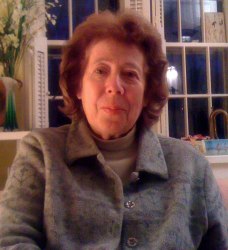 Trustee Stacey Brosky called Kay "the quintessential public servant in Scarsdale." About Eisenman she said, "she has lived here for over 30 years. She served the Village in many roles. She is a fountain of knowledge about the Village and Westchester County. She has thoughtful opinions about issues and studies, listens, and learns. She is fair minded, clear headed and very good with people."
Trustee Stacey Brosky called Kay "the quintessential public servant in Scarsdale." About Eisenman she said, "she has lived here for over 30 years. She served the Village in many roles. She is a fountain of knowledge about the Village and Westchester County. She has thoughtful opinions about issues and studies, listens, and learns. She is fair minded, clear headed and very good with people."
She remembered Kay's response to residents during Superstorm Sandy when tempers were frayed. Brodsky said, "Kay's intrinsic empathy cut through the anger and calmed everyone down. Eight days in she had no power and a large tree had fallen on her property. Kay asked people to be reasonable. Her words and demeanor reminded people that the Board of Trustees are just neighbors."
According to Brodsky, Kay also distinguished herself in discussions about the controversial Homestead Tax Option in the face of strong advocacy for and against the measure. "Kay cut right through the arguments." She explained that "it felt wrong and unethical and she could not vote for it." She said, "Kay gets to the heart of an issue with balance and empathy. It is an art... I can't think of anyone who is a better representative of all the people with a strong commitment to doing what is right."
Turning to Jon Mark, Brodsky said, "I am having a hard time saying goodbye because I can't imagine the Village Board without him... I often think that being a board member is the perfect job for a nerd. I mean this as a compliment when I say there is no bigger nerd than Jon. He reads his documents more thoroughly than anyone. He is a forward thinker and a backstop on every issue we address... He is a master of the process in involving the community in decision-making. He skillfully navigated public meetings, always respectful of all participants. His energy and focus has encompassed all aspects of the board's work. I have learned so much from working with Jon. I am individually grateful and grateful as a representative for the whole community for Jon's work. I think he is irreplaceable."
Next it was Mayor Bob Steves turn to pay tribute to his departing colleagues. He said, "Doing this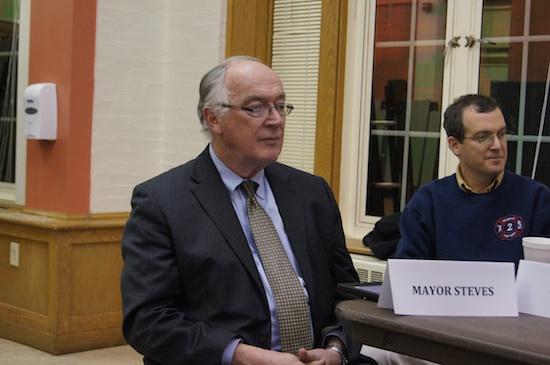 job is all about the people! About all the people but sometimes it's about the individual people. The people who make it worthwhile, the people who inspire, the people who point our your mistakes and help you correct your mistakes. These are two of the finest people who have provided that support for the community. Kay is a quiet person, you find yourself listening intently to the quiet voice. Had I not listened I would have lost her wisdom. Good thoughts, worthy thoughts, objective and well thought out. Almost like the conscience. "
job is all about the people! About all the people but sometimes it's about the individual people. The people who make it worthwhile, the people who inspire, the people who point our your mistakes and help you correct your mistakes. These are two of the finest people who have provided that support for the community. Kay is a quiet person, you find yourself listening intently to the quiet voice. Had I not listened I would have lost her wisdom. Good thoughts, worthy thoughts, objective and well thought out. Almost like the conscience. "
About Jon he said, "There is eloquence in true enthusiasm. You bring gusto, energy, and all your strengths to the job. I have enjoyed the phone calls, the back and forth as we exchanged ideas. Jon is a prime example of what it means to be a trustee. The bar has been set very high."
Kay Eisenman then took the mike and said, "These have been eventful years – years of great personal growth for me. I have gotten to know many wonderful people on the board and staff of the village. I feel that you have all become friends as well as colleagues. I will miss our collegiality. You should all know how terrific Mayor Bob Steves is – it's a shame we have term limits because two years is just too short a term."
She then commented on her fellow Board members:
Jon Mark is a stellar guide in leading us through the intricacies of all the problems we faced. On the development at 2-4 Weaver Street he worked with the both the developer and the Heathcote Coalition to bring this project forward.... He can dissect an issue to its essentials, understand its details and shine a bright light into the dusty corners of the knottiest problems.... I hope we will have the opportunity to see him in a leadership position once again."
She called Stacey Brodsky "A passionate speaker with well-reasoned ideas and incisive arguments," saying " You don't want to get on the wrong side of Stacey when she has a keenly held opinion. I always enjoyed our interactions."
About David Lee, she said he is "quiet, logical, and delves deep into all issues." She said Lee is "a gentle man who is also a gentleman who takes his time to formulate ideas (which) are always worth waiting for."
According to Eisenman, "Bill Stern is a force of nature who brings levity to serious issues while still taking them seriously." He has a "fresh approach to issues and is "not afraid to speak his mind." She credited him with a fascinating mind and said, "He does not always color within the lines."
She called Tom Martin "a man with good common sense and practical knowledge, calling him "a pragmatist who doesn't mince words with an unfailingly courteous manner. ... He is truly a man for all seasons."
She ended by saying, "I will miss you all. Thanks to Al, Steve and everyone at Village Hall. ...and to my patient husband Shelly who didn't see me during the week but could always count on seeing me on TV."
Jon Mark began by saying, "As I attend this final meeting as a Village Trustee, I would like to thank the residents of the Village and particularly the Citizens' Nonpartisan Committee for giving me an opportunity to serve on the Village Board. It has been an enlightening, interesting experience in which I came to appreciate how well our Village is run by our professional Village staff and how much time and effort is put in by resident volunteers, including my fellow Board members, in contributing to that overall effort. We have just come from a dinner that is something of a Board tradition at which, among other things, I let the Mayor and my fellow Board members know how highly I think of them and of what a pleasure it has been to serve with them on this Board. I would like to share some of my remarks with those residents who are here or may be watching on cable."
The balance of his extensive comments are shown at the bottom of this article:
Mark was followed by community members who thanked both trustees:
Scarsdale Forum President David Irwin said, "I am here tonight on behalf of two outstanding trustees. I had the opportunity to serve with Kay and John during their first year and they hit the ground running. They have shown great sensitivity to the needs and desires of village residents. Kay is a tireless champion of our green and open space, our tree planting program, and the mulching initiative. Jon, has been a major contributor in many areas certainly the law committee and land use committees where he was a major force in moving along difficult negotiations with the developer. The two have been leaders in financial issues – and kept tax rate low
The village has faced fiscal challenges in the four years they have served and they helped the board keep the tax rate as low as possible while maintaining services to Village residents. They provided four years of outstanding service. On behalf of the Scarsdale Forum I express gratitude for a job very well done."
Incomiing Trustee Deb Pekarek said, "you both emulate "non sibi,"not for ones self." You have served with distinction and grace. Your service is greatly appreciated and warmly acknowledged. You are wise, knowledgeable, patient kind and inspiring. There is much to be learned from you."
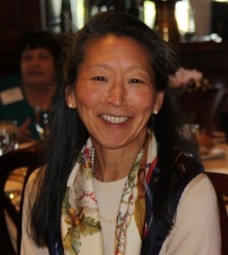 League of Women Voters Susie Rush attended the meeting to thank the two for their service on behalf of the LWVS. Here are her remarks:
League of Women Voters Susie Rush attended the meeting to thank the two for their service on behalf of the LWVS. Here are her remarks:
"Trustee Eisenman, your service on the Board has been a continuation of your long years of service to the Village, including as chair of the BAR and the Conservation Advisory Council. You have been an enormous asset to the Board, bringing your vast knowledge of the Village and a deep, genuine sense of caring and imparting your invaluable expertise in land use and environmental planning. With a quiet, gentle manner, you have provided sound guidance in stormwater management and vital leadership in sustainability issues. We are grateful to you for your steadfast efforts to make us a community of leaf mulchers and for continually encouraging us to explore ways to improve the quality of the environment in Scarsdale, including through consideration of the establishment of an open space preservation fund.
Trustee Mark, we have been the beneficiaries of not only your legal background but also your ease with financial matters. You are a quick study on issues that come before the Board, whether it is a rough back-of-the-envelope calculation of the impact on residents if the Homestead Tax Option were adopted or the number of miles of roads we can resurface with the dollars allocated in the budget, and have demonstrated a remarkable ability to find a solution to the most intractable of issues, such as 2-4 Heathcote. Your incisive questions and analyses always serve to move the discussion forward. Yet even as you look to retire from the Board, you are thinking about the future of our community and the challenges that your colleagues and future board members will be forced to tackle.
We thank both of you for your dedication and unswerving commitment of time, energy and intellect to improving the quality of life for all of us."
Former Trustee Bob Harrison said, "Kay was my sidekick, elbow to elbow, who helped me when my papers became dislodged. I would like to call her Mrs. Sustainability. Thank you for your tremendous service to the community."
To Jon Mark, Harrrison said, "How many billable hours could you have billed the Village for all the valuable work you did?. You brought people together. The community does not realize how much time you put in as trustees – all volunteers."
Here is the balance of Jon Mark's remarks from the meeting:
Trustee Martin
Tom—we grew up in Scarsdale at the same time, but it took more than sixty years and the Scarsdale nonpartisan system to bring us together. I am glad we met. You have brought both your imprinted memories of the Scarsdale we knew growing up and your business acumen to the issues coming before the Board. You were determined to ask the hard questions as we went through the budget process in the spirit of finding answers to the economic challenges the Village and its residents face. In addition, you took up the reins as Chair of the Board's Personnel Committee duties and quickly worked your way to an efficient process for re-populating the Boards and Councils that are an important source of resident input to the Trustees. It was high time we got together and I look forward to seeing the fruits of your efforts on the Board in the years ahead.
Trustee Stern
In recent years, some have suggested that it might be beneficial if the Village Board membership included a resident with a scientific and particularly, a technological background. Bill, you have exceeded expectations in fulfilling that slot. A world-class PhD electrical engineer, as well as a successful businessman, you bring your knowledge of state of the art technology and a no nonsense practical approach to a variety of issues that come before the Board. Whether it is successfully advocating for new equipment for the Cable TV Commission, or lending your enthusiastic voice to conservation and sustainability efforts for the Village your forceful manner laced with humor makes you an effective contributor to the work of the Board. It has been a pleasure getting to know you and I look forward to seeing the results of your contributions in the years ahead.
Trustee Lee
David — We also grew up in the Village at the same time. And I am similarly glad we finally met and had the opportunity to work together. You bring your legal analytical skills and a willingness to wrestle with details to bear in considering Board issues generally and in particular the proposed Village Code amendments this Board has focused on during our tenure together. Your care in considering all sides of an issue, in listening to points raised by fellow Board members, Village staff and Village residents is a key asset you bring to the work we do. You are also able to articulate your views in a clear, understandable manner that is critical to the transparency of the Board process. I greatly enjoyed working on the Board with you David and am confident that you will continue to make meaningful contributions to its work during your second term.
Trustee Brodsky
Stacey -- Where to start? Your deep concern for the Village comes through in every Board task you take on. From land use issues, historic preservation concerns, Personnel Committee decisions, Finance Committee budget analysis and advocating for the Library for which you serve as Board liaison you have an ability to get to the heart of an issue and pose a solution that will work. You are always willing to listen and are not afraid to be persuaded to a point of view other than the one you may have started with. You have an ability to present your conclusions clearly and succinctly and are always willing to assist me in making sure I did the same on matters for which I carried the laboring oar. Your hard work on this Board and the contribution to the Village that it represents cannot be overstated. You have been a wonderful colleague and I will miss our collaborations when I depart.
Trustee Eisenman
Kay – We met in the third floor conference room on a Sunday in 2009. You emerged from the meeting room having just presented yourself to the Citizens Nominating Committee and I was about to head inside. You wished me good luck. As luck would have it, we wound up serving on the Board together. Your long-term residence in the Village, your expertise in urban planning and the local knowledge you gained serving on the BAR, including two years as Chair and your service as chair of the Conservation Advisory Council, have allowed you to make important contributions to the work of the Board. Your oversight of various storm water projects as Chair of the Municipal Services Committee and your tenacious advocacy for mulching leaves in place have provided critical support for these projects. While there is still much work to be done in these areas, it is clear to me that without your contributions, the Village would not have made the progress it has in these areas. It has been a pleasure working with you and I wish you all the best in your future endeavors.
Mayor Steves
Mr. Mayor -- Bob, you are the model of a Scarsdale volunteer. Having served seven years on the School Board, including one as its president, in the '90s, to devote five—going on six years—to the Village Board is an example of Village volunteer service only a few residents can match. If that were not enough you also found time to serve as president and treasurer of the Scarsdale and Edgemont Family Counseling Service, president of the Greenacres Neighborhood Association, chairman of the STEP program, chairman of IHM's School of Religion and chairman of the Scarsdale Bowl Committee. With all that volunteer experience under your belt you know, above all, how to set a tone for openness, fair consideration of competing points of view and a commitment to getting things done. You lead by example. Your energy and commitment to Village life are a model for us all and it has been a pleasure getting to know you and working with you over the past four years. The Village is lucky to have you.
I would like to take this brief time to address a broader subject in light of my experience over the past four years and express my thoughts on our non-partisan system embodied in part by this Board.
Since the early 1900s Scarsdale residents have run municipal government on a non-partisan basis. While dissatisfaction with that approach is expressed from time to time, the overwhelming evidence is that our Village is very well run as reflected by the continuing desire of almost half our residents to remain here long after their children have completed school, and by the arrival of new residents. The very able Village staff keeps things running day-to-day and I see no basis for concluding that, a partisan system of electing officials overseeing Village staff work would improve how the Village staff carries out their day-to-day duties.
What the Mayor and the Village Board do in general terms is to oversee the staff; establish spending priorities through the budget process; appoint residents who volunteer to the various Village Boards and Councils; and focus on areas of resident concerns and consider how improvements might be made. What the non-partisan system supports is the very strong Board principle that when acting, Board members must consider the interests of all residents when deciding on a course of action.
The ability of the Board to approach issues without the pressures of partisanship gives it the freedom to balance competing concerns in exercising its judgment on the matters before it. It does not mean that the Board is always right. It does not mean that every resident is happy with every Board decision—we receive regular reminders from residents that some are not happy with Village operations or decision-making. However, it does mean that every resident who wishes to voice an opinion to the Board is heard and his or her comments are weighed in the balance. That openness of approach – the willingness to hear all sides of an issue -- is not something that I am convinced a partisan system would produce, much less improve.
Another benefit of our system is that there are no barriers to entry. Almost any resident can participate by simply investing the time and effort to do so. Many take advantage of the opportunity and more should. Board members are your neighbors and the issues that the Board addresses are issues for all of us in the Village. The community interests Board members share with all residents is one of the strengths of our system.
What could we all do better? Perhaps more broad-based participation in the municipal side of Village life. There are 17 municipal Boards and Councils staffed by residents who volunteer their time and effort to decide and/or advise of a variety of Village-wide issues. Approximately 130 residents give unselfishly of their time usually after full days of work and attending to their families in serving on these bodies. In addition to that formal commitment, over the course of the year, residents appear before this Board to express their views on Village issues. Also, the Scarsdale Forum and League of Women Voters provide important input in the form of generally well prepared written reports that this Board considers on budget and other issues. Still, with all this feedback, I for one have struggled with the issue of how best to get a sense of what residents really want in terms of service.
Input from approximately a few hundred residents out of a Village of 17,000 is, at least on a numerical basis, seemingly not a lot of feedback. And perhaps that is how it should be when things are running smoothly. But on the one hand, it is easy to know that residents want smooth, pot-hole free streets and to be unburdened by the threat of flooding during major rain storms. On the other hand, concern about over-development of the Village is a harder concept to put into effect. It is appears that some residents would like Scarsdale placed in a bubble, to be preserved for all time as an example of 20th century suburban life. These views are easily perceived as they come from an ardent, vocal—but relatively small number of residents. Where it gets more difficult is in balancing the potential cost of addressing that concern against the rights property owners – old and new. Residents weigh in larger numbers when there is a crisis, but other than that we tend to hear from a core group of dedicated followers who sometimes reflect only one side of a particular issue, leaving the Board to guess at what residents might say on the other side.
The time for making tough choices is now upon us. We have substantially completed the budget process for fiscal year 2014-2015. The proposed budget and those for future years will be molded by pressures driven by general economic pressures and the desires in Albany to force municipal consolidation through fiscal discipline. The State has tried to impose discipline through the misleadingly labeled property tax cap, among other things. It is misleadingly labeled because it is not a cap at all. It is an aspirational target designed to put pressure on local spending on municipal services and schools while ignoring other significant factors that cause property taxes to increase – namely, state mandated payments for pension and health benefits that are exempted from the tax "cap" calculation. As a result of these pressures, we will increasingly be required to decide what sort of Village we want and more importantly what we are willing to pay for. The choices made will directly and visibly impact the nature of life in this Village. The Village staff and the Village Board are tasked with making those choices and doing so will be difficult.
While it won't make the decision-making easier, having broader-based community input on what expectations are going forward would contribute greatly to making those choices both thoughtful and when made, better explained to residents generally. So my parting suggestion is for residents to speak up in a thoughtful, civil and constructive manner. Volunteer to serve on the Boards and Councils, or join the Scarsdale Forum and League of Women Voters if you wish to have recurring input. If that is not practical, an opportunity for public comment on any Village issue is a part of every Village Board meeting held on the second and fourth Tuesdays of every month. Hearing your voices in these ways can only help the Village in navigating what will surely be difficult years ahead.
One final comment on a personal note: I would not have even walked through the door at the first Citizens Nominating Committee meeting I addressed had it not been for the support and encouragement of my wife BK Munguía. The awareness that some CNC members had of her hard work in a variety of Village-related matters over many years were the coattails that gave me at least some creditability as a potential nominee. So BK, I thank you for creating the opportunity to serve our community and for your steadfast support of over the past four years.
Again, my thanks to the community for allowing me to serve and my best wishes to my fellow Board members, to Marc Samwick and Deb Pekarek, Trustees-elect who are here tonight and to all my neighbors for the years ahead. And with that, we should turn to the Board business at hand.
Village Trustees Elected in Scarsdale
- Details
- Written by: Sarah Schuman
- Hits: 4505
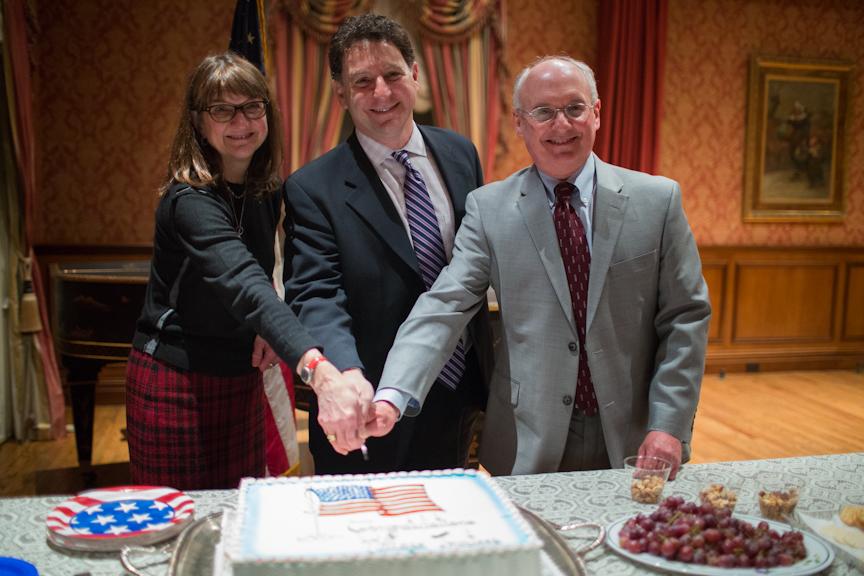 A celebration was held at the Scarsdale Women's Club on Tuesday night March 18 to recognize Deb Pekarek and Marc Samwick who were elected to serve their first two-year terms as Village Trustee and David Lee who was elected to serve a second term. The candidates, all nominated by the Scarsdale Citizen's Party, ran unopposed and voting was light with just 207 votes cast on Tuesday March 18, 2014.
A celebration was held at the Scarsdale Women's Club on Tuesday night March 18 to recognize Deb Pekarek and Marc Samwick who were elected to serve their first two-year terms as Village Trustee and David Lee who was elected to serve a second term. The candidates, all nominated by the Scarsdale Citizen's Party, ran unopposed and voting was light with just 207 votes cast on Tuesday March 18, 2014.
 The two new trustees will replace Kay Eisenman and Jon Mark, both who completed four years of service on the Board of Trustees. The counts were 197 for Pekarek, 192 for Lee and 185 for Samwick. There were several write-in votes as well, with Robert Berg receiving 2 votes and John Bensche, Robert Harrison and William Silverman receiving one vote each.
The two new trustees will replace Kay Eisenman and Jon Mark, both who completed four years of service on the Board of Trustees. The counts were 197 for Pekarek, 192 for Lee and 185 for Samwick. There were several write-in votes as well, with Robert Berg receiving 2 votes and John Bensche, Robert Harrison and William Silverman receiving one vote each.
Commenting on the election, Pekarek and Samwick said, "We are very excited and really looking forward to serving our community and working to uphold the very high standards of the existing board, the mayor and village staff. We are sorry that Kay and Jon are leaving the board. They set a high bar and we will miss their wise and valuable counsel."
David Lee added, "I'm looking forward to another term. And I'm so pleased that my fellow 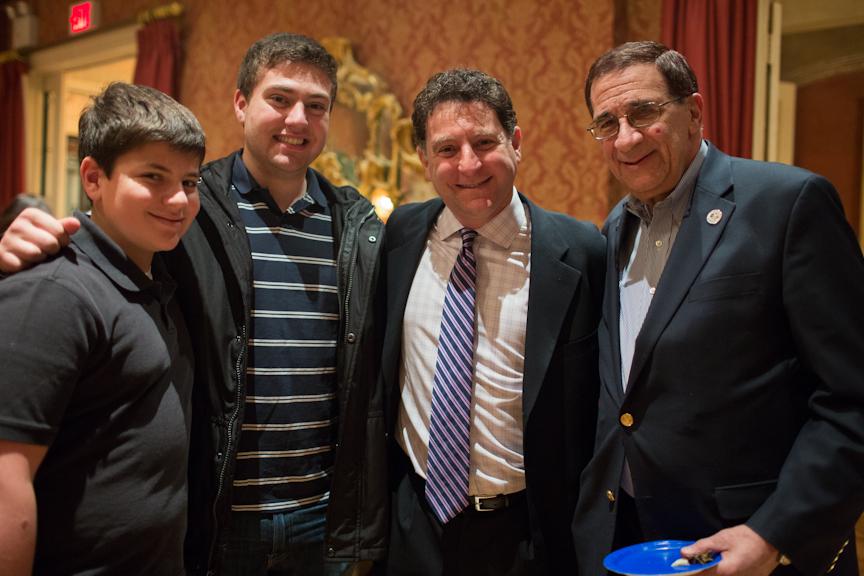 candidates who will be joining us. They bring a lot of experience and dedication that they have already shown toward community activities, so we're lucky to have them on the board."
candidates who will be joining us. They bring a lot of experience and dedication that they have already shown toward community activities, so we're lucky to have them on the board."
Text and Photos by Sarah Schuman










